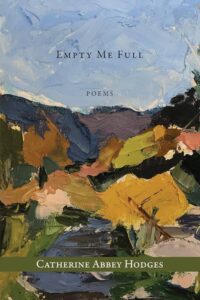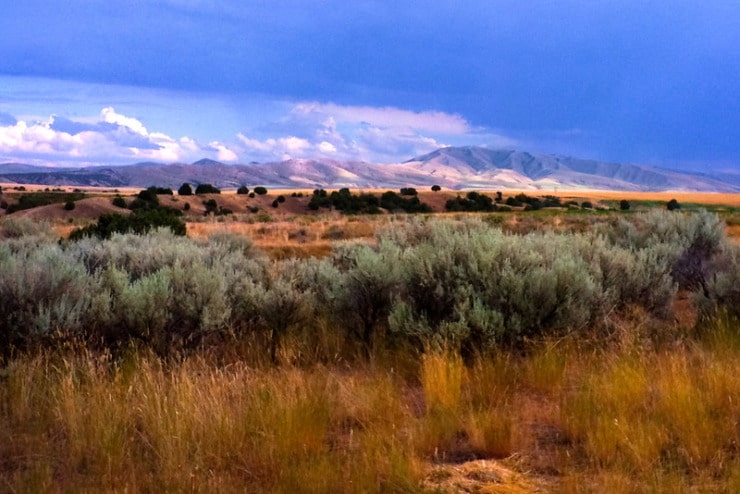Catherine Abbey Hodges uses dreamlike imagery to ask important questions
From the first poem in Empty Me Full, I had the distinct impression I had entered of series of successive dreams. I was about 10 poems in when I realized what it was. Catherine Abbey Hodges powerfully uses images to prompt the reader to ask fundamental questions. Or is it questioning the fundamentals?
Consider a few images from the first poem of her new collections: a rising river, a time lapse of the night sky, the torso of heaven, mice nesting in a piano, the arch of a dying oak, a worm in an oak dreaming as it chews. The images come so fast that you’re moving through a metaphorical mist, knowing all the time you’re nearing something important.
A poem on the Grand Canyon becomes a short study of life’s purpose. A line of rowboats at a dock prompts a consideration of parents. The scars a storm leaves on the landscape offer a comparison to what happens in a person’s life. She’s reminded of a boy who’s taking a test a time zone away, the same boy who once saw an angel down a hallway at dawn. And the man outside her window, pulling weeds, is the boy she married, just a few decades on.
All the while you think you’re in a dream. You’re experiencing the dream and knowing at the same time you’re dreaming. You can step outside of it if you need to and examine what it is your mind and your dream are trying to say. In her poems, Hodges covers all that interior landscape. Her poems can be as self-educational as they are disconcerting.
Autumn Again

to be a cat—tabby, kinked tail.
And the finches behaved
accordingly. Then September
flew past with its pears
and empties. Speaking of empty,
the sky, but only till my eyes
adjust. October? You
love it for old time’s sake,
as do I you. Again you choose it
from the drop-down menu.
Now here’s our mother, back
from the attic, back from the dead,
lugging the box of costumes.

Catherine Abbey Hodges
Hodges has previously published three poetry collections, Instead of Sadness (2015), Raft of Days (2017), and In a Rind of Light (2020); and two chapbooks, All the While (2006) and A Spell for What Comes Next (2018). Her work has been published in numerous literary journals, including The Southern Review, CALYX, Tar River Poetry, Atticus Review, Cider Press Review, and many others. She is professor emeritus at Porterville College in California and a co-founder of the coaching and manuscript service Canyon Wren Writing, and she serves as staff reader for Anacapa Review.
Dreams emerge from our subconscious. They’ve often been inspired by something we’ve recently seen or experienced; if I watch a murder mystery at night before bed, I’m likely to have a dream in which I’m being chased. But dreams can be more. As Hodges shows in Empty Me Full, dreams and the images they evoke can point us to questions often asked but less often answered. Her poems tackle the answers.
Photo by Dawn Ellner, Creative Commons, via Flickr. Post by Glynn Young.
How to Read a Poem uses images like the mouse, the hive, the switch (from the Billy Collins poem)—to guide readers into new ways of understanding poems. Anthology included.
“I require all our incoming poetry students—in the MFA I direct—to buy and read this book.”
—Jeanetta Calhoun Mish
- Poets and Poems: Autumn Williams and “Clouds on the Ground” - November 20, 2025
- The Manuscript of “The Waste Land” by T.S. Eliot - November 18, 2025
- “The Summer We Crossed Europe in the Rain” by Kazuo Ishiguro - November 13, 2025


Leave a Reply